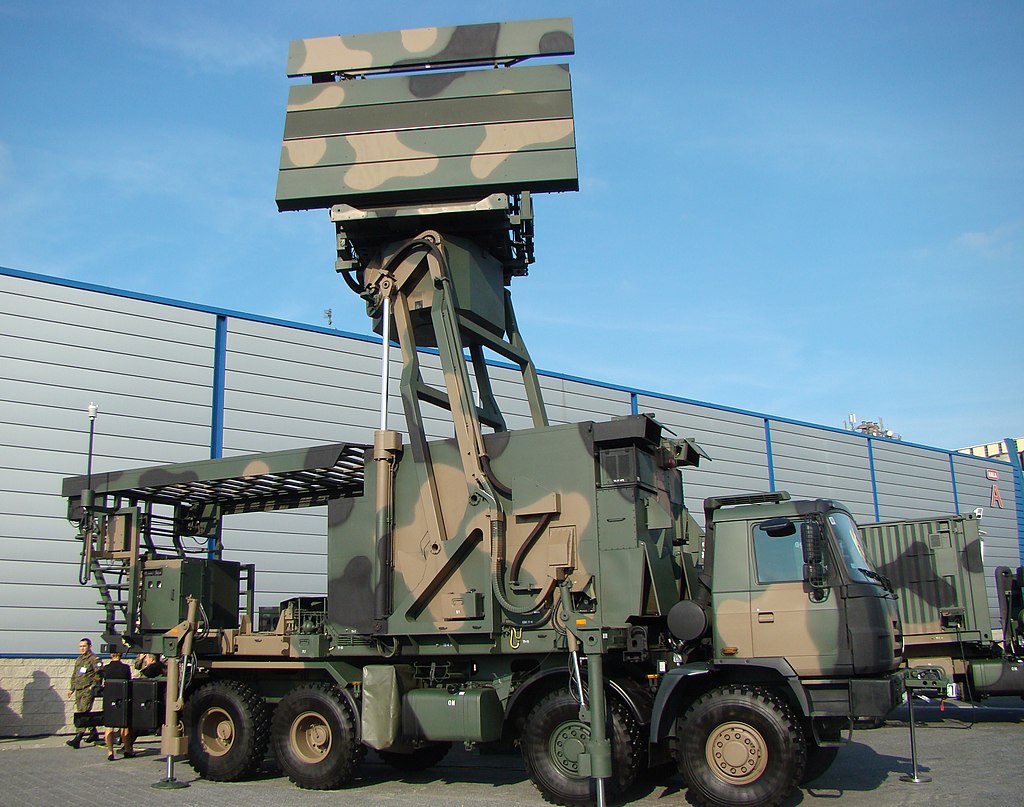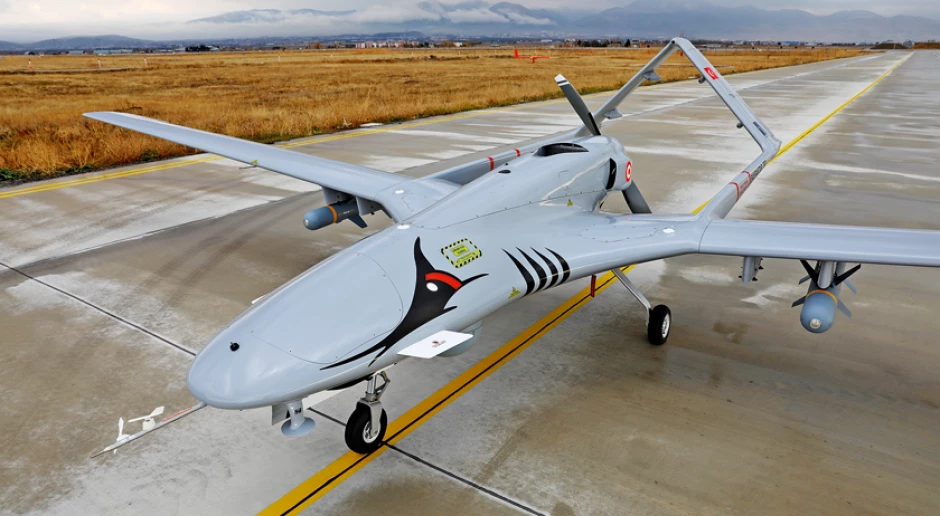A technological leap forward in the Polish military. We'll look deep into enemy territory.

- Only in recent years has Poland begun to strengthen its long-range reconnaissance capabilities. However, considerable progress has already been made, particularly to enhance reconnaissance from space.
- Not so long ago we were almost blind when it came to using our own long-range reconnaissance systems.
- Today, Poland is investing in its own satellites and ground stations, which allows for full autonomy and access to satellite data in almost real time.
- What has already been done to access space data and what other reconnaissance systems have we acquired or want to acquire, and why is it so important?
- We will discuss the challenges of military production at the "Defense Industry" conference. The event will take place on October 15 at the International Congress Center in Katowice.
For many years, Poland lacked long-range combat systems. The military still feels the effects of these shortcomings. For example, the Naval Missile Brigade possesses Norwegian Kongsberg anti-ship missiles (NSMs) with a range of approximately 200 km, or perhaps even greater.
However, to hit a target, operators must know its precise location. The TRS-15C Odra-C ground-based radar systems, manufactured by the Polish company PIT-Radwar and equipped by the Naval Missile Unit (MJR), which was transformed into the Naval Missile Brigade in 2025, can only "see" out to a range of 40-50 km. This means the missile cannot be effectively guided to a target further away.
This isn't because our radars are inferior to others. On the contrary, they are modern, three-dimensional radar stations. Their effective detection range of 40-50 km for surface targets is limited by the so-called radar horizon, the physical boundary of radar visibility, limited by the curvature of the Earth.

All ground-based radars, even the most advanced ones, are unable to "see" beyond several dozen kilometers above the sea surface , especially if the target is located at low altitude. Unless the target's position is provided by other, external reconnaissance systems, such as AWACS long-range reconnaissance aircraft, reconnaissance drones like the MQ-9B SeaGuardian, which Poland plans to acquire, or ships with long-range radars.
Poland is currently building its own reconnaissance ships using systems based on the Sea Giraffe radar. These are already deployed on some Polish Navy ships, including Orkan-class missile units.
We are building two electronic reconnaissance shipsAs part of the Delfin program, we are also building, not without many vicissitudes, two electronic intelligence (SIGINT) ships, modeled on the Swedish ship HMS Artemis, which entered service in 2024.
These are the ORP Jerzy Różycki and ORP Henryk Zygalski. The project is being carried out by Saab AB and Remontowa Shipbuilding. The contract value is approximately €600 million net. However, the use of reconnaissance vessels with long-range radars carries risks.
They are extremely valuable in reconnaissance and defense systems, but they are easily targeted by their intense radar radiation and cannot change position as quickly as aircraft or drones. Hitting such a ship not only potentially results in the loss of crew but also operational and strategic reconnaissance capabilities.
To complete the maritime theme, let's add that stationary radar towers would also be a solution, but they are extremely vulnerable to attack. The military could also use aerostats purchased under the Barbara program, which we acquired in May 2024, signing an agreement with the United States government, to guide NSM missiles .
We have contracted four such airships for $960 million (approximately PLN 3.76 billion). The purchase will be financed by a US loan under the Foreign Military Financing (FMF) program. These airships can carry a long-range radar with an Identification Friend or Foe (IFF) system and optoelectronic sensors to an altitude of 4,000-6,000 meters, allowing them to detect even low-flying targets such as drones, cruise missiles, and helicopters at ranges of 300-400 km.
Unfortunately, balloons are large, slow, or stationary, making them easy to spot. If unprotected, they can be shot down by missiles or drones, though this isn't as easy as it sounds. Airships are bullet-proof, and even hundreds of holes won't cause them to collapse instantly.
The first aerostat is scheduled for delivery by the end of 2026, and the remaining three by the end of the third quarter of 2027, when they are expected to reach full operational readiness. They will be deployed along Poland's eastern and northeastern borders.
We invest in our own satellites and ground stations, which gives us full autonomyFor many years, we lacked our own orbital observation systems. This forced Poland to rely on data provided by allies, primarily through cooperation with NATO and the European Union. The military relied on satellite data provided by the US, France, and Germany under alliance agreements.
Access to systems such as AWACS and NATO observation satellites allowed for partial fill-in of gaps, but did not fully address the needs. Poland concluded a number of agreements to acquire this data from the US, France, Germany, and Italy. However, these agreements limited the number of images collected per day (e.g., 5-10 images), and orders had to be placed in advance, limiting flexibility.
In the case of Italy and France, access to data was possible thanks to the receiving station in Białobrzegi, which shortened the delivery time.
Typically , however, contracts didn't guarantee real-time access to data, but rather specified a maximum delivery time, such as 24-72 hours . Most years, we received this data with a delay of several hours to several days. Moreover, it cost a fortune.
For example, we paid an estimated several million euros per year for data transmitted by two Italian SAR Synthetic Aperture Radar Earth observation satellite systems, capable of operating in all weather conditions - COSMO-SkyMed and OPTSAT-3000 (an optoelectronic reconnaissance satellite that provides high-resolution images up to 1 m).
These data are not fully public, especially when it comes to the USA, France and Germany, but estimates show that in the years 2010-2022 Poland paid PLN 200 million annually for access to data and analytical services.

Therefore, much emphasis was placed on classic forms of reconnaissance, such as ground and air reconnaissance, special units, and later drones and reconnaissance aircraft. Over time, these needs evolved into the need to purchase our own satellites and receiving stations.
Today, Poland is investing in its own satellites and ground stations, allowing for full autonomy and near-real-time access. The most important of the space-related defense programs planned by the Ministry of National Defense began in 2015.
The military has gained access to real-time satellite data.During the conference "Poland in Space" held at that time, the Military University of Technology, in cooperation with the Institute of Aviation and the Space Research Centre of the Polish Academy of Sciences, presented a feasibility study of a satellite program (two satellites) for an optoelectronic Earth observation system.
The project was scheduled to enter its key phase in 2016. The satellites were to provide imagery reconnaissance in the visible and near-infrared wavelengths. They would be placed in a sun-synchronous orbit at an altitude of between 600 and 700 km above Earth and operate for 10 years. The cost of acquiring new equipment of this class is estimated at approximately PLN 700 million.
Then, as often happens with military projects, the feasibility study was completed and submitted to the National Centre for Research and Development. A tender was scheduled for 2017, but it was never announced.
Only after the outbreak of the war in Ukraine, Poland decided to purchase completed satellites from Airbus Defence & Space, valued at €575 million net, under a 2022 agreement. According to the agreement, Poland was granted immediate access to imagery data from the Pléiades Neo satellite constellation from 2023, even before the Polish satellites were launched.
Thanks to this, the military had access to real-time satellite data for the first time and the ability to tailor satellite deployments to its operational needs . However, groundbreaking contracts, purchases, and significant satellite production capabilities with Polish companies—including private companies like the WB Group—have only recently taken place. At the end of 2024, we contracted four optoelectronic microsatellites from Creotech Instruments .
The contract was implemented with the support of the National Recovery Plan using EU funds under the MikroGlob program. Among other things, it was intended to supplement the imaging capabilities of previously purchased radar (SAR) satellites from Airbus in the planned program to build a national Earth observation radar system – MikroSAR.
The contract is valued at over half a billion złoty (approximately 556.7 million złoty). This is one of the most important steps in building a national satellite reconnaissance system. The launch of Polish satellites into orbit is planned for 2027.
Technological and strategic change of Poland's position in the European security systemA few months later, in May 2025, the Ministry of National Defence's Armament Agency signed a contract with a consortium which, in addition to the leader: the Polish-Finnish company Iceye Polska, includes Wojskowe Zakłady Łączności No. 1. The contract was valued at PLN 860 million.
The contract includes the construction of a mobile ground segment with a satellite antenna and an option to purchase three more satellites and another ground segment within 12 months. These satellites are expected to be launched in orbit as early as 2026.
As a reminder, the Polish Army is acquiring new surveillance capabilities not only in space. In 2024, two used Swedish Saab 340 AEW early warning aircraft, which we acquired in 2023, entered service. As mentioned earlier, we are also waiting for American MQ-9B SkyGuardian drones and Barbara aerostats.
Once the ordered equipment enters service, Poland will not only benefit from satellite data but also contribute to the Pléiades Neo constellation, giving it sovereign reconnaissance capabilities. The S950 satellites in this constellation, scheduled for launch by 2027, will then be fully controlled by Poland.
Thanks to investments in optical and radar satellites, long-range drones, reconnaissance aircraft, as well as ground-based and analytical segments, Poland is building a comprehensive geospatial intelligence system . We are no longer just a data recipient, but are becoming a producer and supplier.
By co-creating international constellations and developing our own technologies, in the coming years we have a chance to join the group of countries with a full spectrum of reconnaissance capabilities, comparable to those of NATO leaders.
This is not only a technological leap but also a strategic shift in Poland's position within Europe's security system. The system also contributes to the development of multi-layered air and missile defense, as well as to the deterrence doctrine.
wnp.pl





